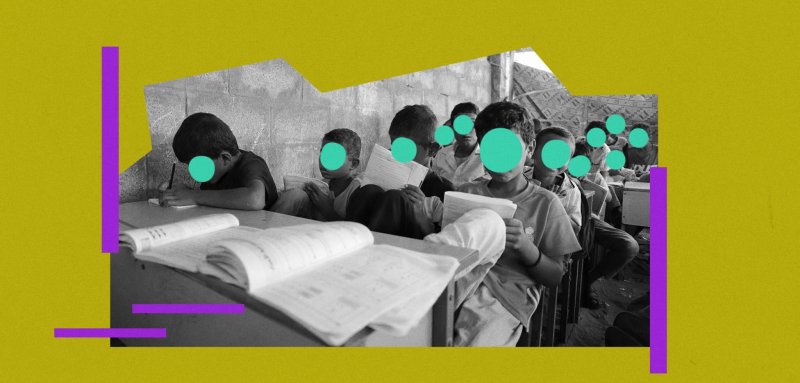Many experts consider attaining a quality education to be one of the most important factors in adolescent development. Primary and secondary education seriously impact the psychosocial and neurobiological development of adolescents, and adolescents who complete primary, secondary, and tertiary education often have better health, familial, and financial outcomes than peers who do not. Moreover, a quality education can teach students highly important digital literacy skills, foundational learning skills, transferable/life skills, and vocational skills, which prove immensely beneficial when it comes to academic, social, and professional success. Those who attain higher levels of education are also associated with lower levels of unemployment. Article 26 of the United Nations Universal Declaration of Human Rights, arguably the most important document codifying foundational human rights, considers education one of the most inalienable human rights:
Everyone has the right to education. […] Education shall be directed to the full development of the human personality and to the strengthening of respect for human rights and fundamental freedoms. It shall promote understanding, tolerance and friendship among all nations, racial or religious groups, and shall further the activities of the United Nations for the maintenance of peace.
In the Middle East and North Africa, a region projected to have 271 million school-age adolescents by 2050, a high-quality education is not universally available. Although many Arab states are vocally reprioritizing education with radical economic transformation programs (e.g., Saudi Arabia’s Vision 2030 and Bahrain’s Vision 2030), several problems plague Arab educational systems.
Most prominently, major regional conflicts and crises have forced millions of Arab students out of school. The United Nations projects that one in five Arab school-age adolescents are not in educational facilities, highlighting that an additional 3 million children would have likely been in school had major regional conflicts not occurred. As of 2015, at least 8,850 educational facilities were destroyed by conflicts in Iraq, Libya, Syria, and Yemen, and by 2017, regional conflicts led to over 14 million Arab students losing access to education. By 2019, at least 16 million school-age adolescents were out of school. Further exasperating the issue, the COVID-19 pandemic temporarily pushed an estimated 100 million students out of school.
Article 26 of the United Nations Universal Declaration of Human Rights, arguably the most important document codifying foundational human rights, considers education one of the most inalienable human rights. Where is the Arabic speaking world on education?
Youth in the Middle East and North Africa region also face multiple economic challenges, including one of the highest youth unemployment rates in the world; skills failing to meet the requirements of the global labor market; a high proportion of youth not in education, employment, or training; and a deficit in available jobs. High youth poverty rates, gender-based barriers contributing to educational inequity, and the marginalization of refugee children and Arab children with disabilities represent more systemic issues affecting widespread access to qualitative education. Regional education systems themselves tend to be highly centralized and teacher-focused, have outdated teaching methodologies and curricula, and achieve poor learning outcomes. And while standardized tests are imperfect, nearly all participating Arab states in major international educational outcome tests, such as the TIMSS and PIRLS assessments, perform near the bottom of all states.
Despite such shortcomings, however, Arab states have made noteworthy progress in making education more accessible, decreasing educational gender disparities, and improving some educational outcomes. Statistics on regional education trends paint a surprising picture of a region gradually improving, though not fundamentally fixing, its state of education.
When considering public spending on education as a share of GDP, expenditure on education in the Arab world increased from 1970 to 2020 with Kuwait leading, it recorded education expenditure relative to GDP at 6.6% compared to 1.9% in Mauritania
How the Middle East Stacks Up
Educational Outcomes
The adult literacy rate is a common way to estimate the effectiveness of a country’s or region’s education system. Over the past five decades, the adult literacy rate has steadily increased in the Middle East and North Africa. Although the region still falls behind the share of adults worldwide who can read and write (86.68% as of 2020), adult literacy rates have steadily risen to at least 80% as of 2020. Despite ongoing conflicts and regional challenges, Arab states also saw a major increase in school participation from 2000 to 2019. Gross pre-primary education enrollment rates jumped from 14.75% in 2000 to around 22.79 percent in 2019, the primary gross enrollment ratio increased from around 92.3% in 2000 to 99.54 percent in 2019, and secondary gross enrollment went from 61.64% in 2000 to 75.97% in 2019.
Another major positive trend over the past half-century has revolved around improving educational gender disparities in the Middle East and North Africa. Fifty years ago in 1970, a woman in the region received 0.4 years of education for every 1 year of education a man received. By 2010, a woman received 0.875 years of education for every 1 year of education a man received.
The average number of years of schooling Arab students get has largely increased since the late nineteenth century. Almost every country in the Middle East and North Africa has seen a steady increase and/or temporary stagnation in this metric over the past century, with the one clear exception being Syria, which saw its population’s average schooling years decline from 2013 to at least 2017.
Tertiary Education
Across the Middle East and North Africa region, more and more people are attending post-secondary education institutions (commonly known as tertiary education). Whereas the total ratio of students enrolled in tertiary education was approximately 6% in the region in 1970, it skyrocketed to over 37% in 2014. In 2014, in Iran, this metric was 65.98%; in Israel, this metric was 66.18%; in Turkey, this metric was 86.31%; and across the world, this metric was 34.98%.
Many Arab universities are now considered among the world’s top 2000 universities, with some earning spots on top 100 global university lists. For example, the US News and World Report, an aggregator of global university statistics, ranks King Abdulaziz University as the 65th-best university in the world in a tie with Erasmus University Rotterdam in the Netherlands, and Saudi Arabia’s King Abdullah University of Science & Technology as the 95th-best global university . Times Higher Education finds that no major university in the Middle East and North Africa made it into the top 100 global universities this past year. However, it ranks Saudi Arabia’s King Abdulaziz University as the 101st-best university in the world and King Fahd University of Petroleum and Minerals and Qatar University between 200th and 250th place globally. According to US News and World Report, Cairo University was the fifth-best university in Africa this past year, and King Abdulaziz University was ranked as the seventh-best university across Asia in the same time period. Multiple Arab universities made it into the Center for World University Rankings’ Global 2000 List of the world’s top universities for 2023, including King Abdullah University of Science and Technology at 245th place, and Cairo University at 520th place.
Major regional conflicts and crises forced millions of Arab students out of school. The UN projects that 1 in 5 Arab school-age adolescents are not in educational facilities. Without conflict, an additional 3 million children would have been in school.
Government Spending on Education
When considering public spending on education as a share of a nation’s GDP, government expenditure on education slightly increased from 1970 to 2020 in the Middle East and North Africa, with many nations evolving budgets, keeping spending largely the same, or decreasing spending. In 2020, Kuwait had the highest recorded education expenditure relative to its GDP at 6.55%, whereas Mauritania had the lowest recorded rate at 1.89%.
Available data on Arab government expenditure on tertiary education is more sparse but suggests which Arab states appear to consistently support tertiary education—such as Morocco, Oman, or Tunisia—and which states do not—such as Syria or Kuwait. However, due to gaps in data collection and a lack of more contemporary statistics, it is difficult to identify concrete governmental spending patterns on tertiary education.
How much a government spends on education as a share of its total spending offers a glimpse into how much it prioritizes educational spending within its budget. Such statistics suggest that although many Arab states decreased or maintained education spending from 2000 to around 2015, several states began increasing their budgets thereafter. In 2020, Algeria was recorded as the country in the region with the highest percentage of government expenditure on education at 16.55% of its total spending, and Somalia was recorded as the lowest at 4.41%.
Education for all, positive outcomes for some
With several Arab states increasing government spending on education and others reimagining their approach to education in general, figuring out how to deliver a qualitative education is top of mind for many Arab leaders. After all, education can offer several major macroeconomic benefits for a nation. Some political scientists argue that higher education levels positively correlate with the growth and sustainability of democratic institutions, that women’s education can decrease child mortality rates, and that better quality education is a necessary precursor to long-term economic growth. For individuals, quality education can pose very attractive benefits beyond attaining knowledge and critical life skills. Education is causally correlated with higher earnings and associated with positive social outcomes, such as better health, and higher political efficacy.
Many statistics associated with educational progress are improving across the Middle East and North Africa. Students in the Arab world, though, continue to face formidable barriers to receiving a quality education. In the face of these challenges, accessible and qualitative education—and all that comes with it—has become increasingly important to the success of not only Arab students but the future of the Middle East itself.
Raseef22 is a not for profit entity. Our focus is on quality journalism. Every contribution to the NasRaseef membership goes directly towards journalism production. We stand independent, not accepting corporate sponsorships, sponsored content or political funding.
Support our mission to keep Raseef22 available to all readers by clicking here!
Interested in writing with us? Check our pitch process here!



